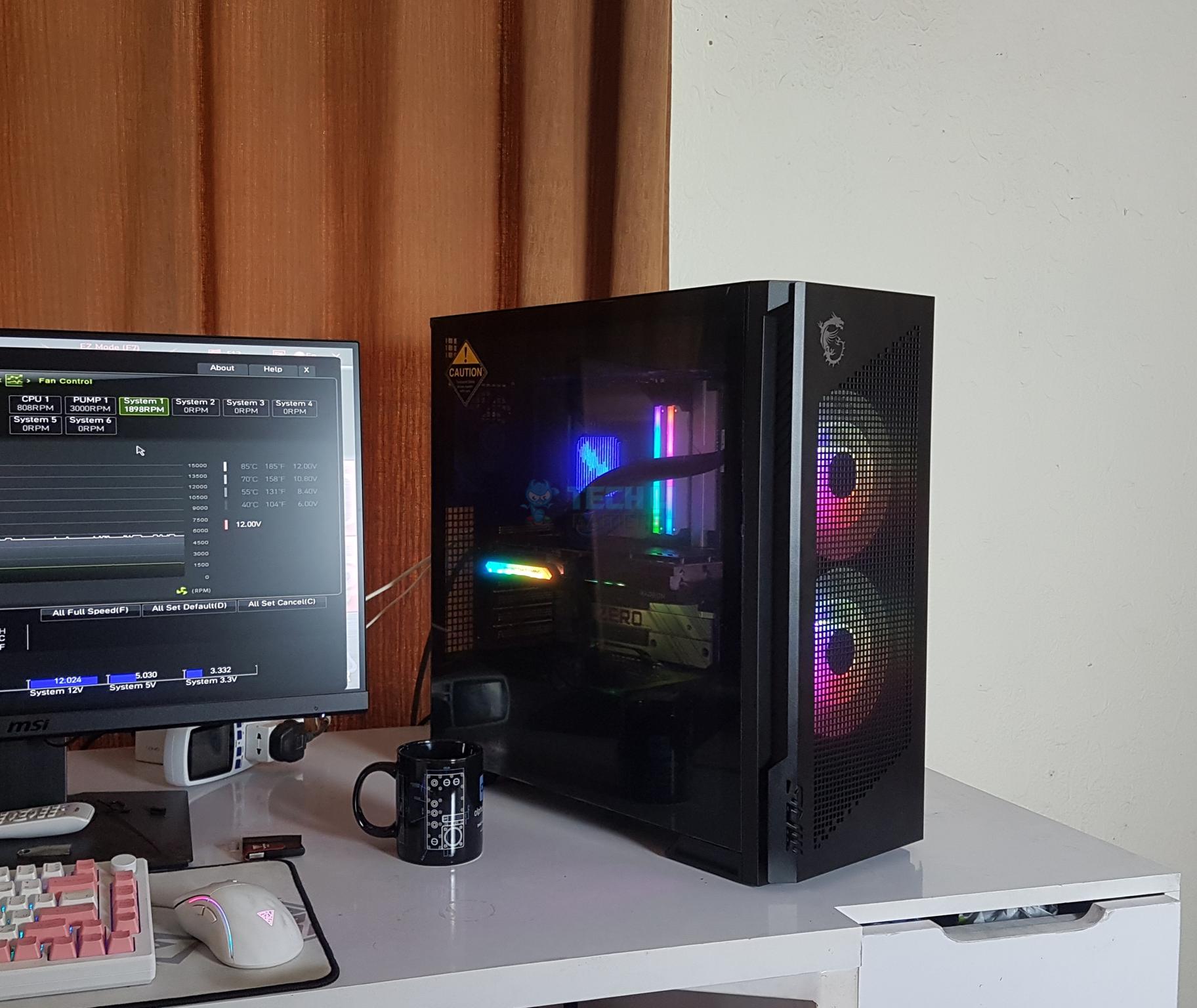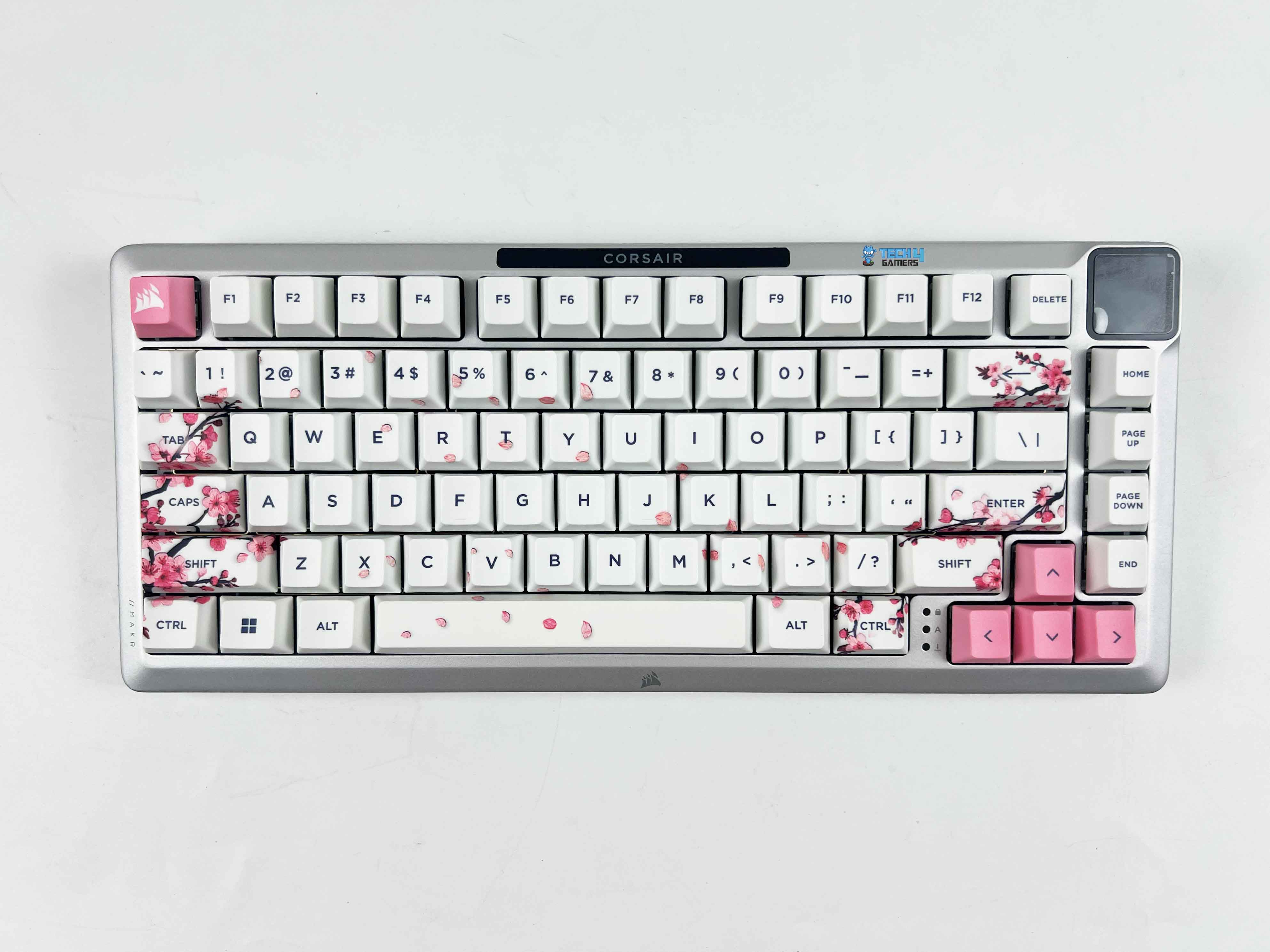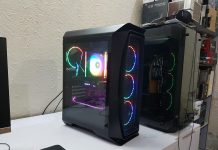True Beauty Indeed
Review Summary
The Corsair 2500D Airflow case outshines the competition with its impressive cooling capabilities and customizable options, including support for up to 11x 120mm fans and interchangeable wood or metal panels. Its dual-chamber design enhances cable management and overall aesthetics, making it a great fit for high-end builds and reverse-connector motherboards. If you prioritize excellent airflow, a sleek dual-chamber design, and customization, this case is a solid choice. On the other hand, if you’re on a budget, need extensive storage, or prefer a smaller form factor, you might want to explore other options.
Hours Tested: 8

Overall
-
Design - 9/10
9/10
-
Build Quality - 9/10
9/10
-
Performance - 9.5/10
9.5/10
-
Value - 7/10
7/10
Pros
- Excellent Airflow
- Dual-Chamber Design
- Customization Options
- Flexibility
- Quality Build
Cons
- Limited Storage Options
- Additional Costs
- Lack of Fans in the Base Model
- Price
For some time now, Corsair has been in the market competing with small, dual-chamber cases. So, it should come as no surprise that Corsair has returned with its dual-chamber revisions, and this time it’s with the Micro ATX 2500D Airflow case. By doing so, they are reigniting the dual chamber case market and continuing the legacy of their renowned predecessors. There are three main points that this new lineup is designed to improve upon to make the niche better.
In addition to a wide range of accessories, including panels made of various materials, these cases provide customers with the option to switch between glass and airflow layouts. The design is specifically made to be compatible with motherboards that have reverse connections and works with iCUE Link to hide wires, ensuring that you can build neatly in any area of the case.
Notably, this fresh dual-chamber case packs several intriguing new features that need a closer look. After getting my hands on the components that were required, it was necessary to evaluate the case performance. Let’s find out how it performs after putting all of my favorite components into it.
We have also tested and reviewed the Corsair 6500X – another dual-chamber back plug chassis, make sure to check it out as well.
Key Takeaways
- The Corsair 2500D Airflow is a versatile and well-designed case that excels in cooling performance, thanks to its support for up to eleven 120mm fans and a mesh front panel.
- You should buy the Corsair 2500D Airflow if you need excellent airflow and cooling options, appreciate dual-chamber design, want customization options, or use reverse-connector motherboards.
- You should not buy the Corsair 2500D Airflow if you are on a tight budget, need more storage options, or prefer a smaller form factor.
Here are the specifications:
| Case Height | 376 |
| Case Length | 469 |
| Case Width | 304 |
| Color | White |
| Weight | 13.87 |
| Radiator Compatibility | 120mm, 140mm, 240mm, 280mm, 360mm |
| Maximum GPU Length | 400mm |
| Maximum CPU Cooler Height | 180mm |
| Maximum PSU Length | 225mm |
| Compatible Liquid Coolers | H60, H100i, H115i, H150i (All Series) |
| Case Size | NA |
| Case Power Supply | ATX |
| Case Expansion Slots | 4 horizontal (4 vertical with accessory) |
| Case Front IO | (1x) USB 3.2 Gen 2 Type-C, (2x) USB 3.2 Gen 1 Type-A, (1x) Audio in/out |
| Case Window | Tempered Glass |
| Case Warranty | 2 Year |
| Internal 3.5″ Drive Bays | 2 |
| Internal 2.5″ Drive Bays | 2 |
How Is The Corsair 2500D Different?
The 280X is another previous model that emphasizes the dual-chamber design. However, it does not offer the same level of airflow optimization as the 2500D Airflow. The 2500D Airflow provides better cooling options and enhanced flexibility for different build configurations. Its innovative features and support for the latest high-end components position differentiate it as a forward-thinking solution for modern PC builders.
Design
First, the fundamentals. The 2500D Airflow is a Micro ATX case that is made for high-end small form factor (SFF) builds that need enough ventilation. Upon shifting the Corsair 2500D off its packaging to my testing desk, the first thing that caught my attention was its excessively large size when compared to other Micro ATX cases. The Micro ATX name contradicts the unexpected amount of room within this case. In comparison, its dimensions of 18.86 x 11.97 x 14.8 inches are far greater than those of the 280X, its predecessor.
With the increasing thermal demands and size of high-end components, this additional room is much appreciated. It gives ample room for the newest GPUs, bigger AIO coolers, and whatever else you want to put in, even with a design that aims at smaller builders. You won’t have any trouble getting it all set up. Keep in mind that the 2500D isn’t exactly a tiny form-factor chassis and that it doesn’t accommodate full-size ATX motherboards either.
It lies somewhere between the both. One of the numerous advantages of this layout is the physical separation of the power supply and storage devices from the primary component area. To start with, it facilitates improved cable management, which in turn keeps your setup appearing neat and organized. In addition to improving airflow, it serves to separate the heat-generating power source from the primary components.
Airflow
Several convenient connections are available on the 2500D Airflow’s front panel. It has a combined audio jack, two USB 3.2 Gen-1 Type-A ports, and one USB 3.2 Gen-2 Type-C connector. Therefore it should be able to meet the demands of most users for speedy ports. Regardless of the look you’re going for with your build, Corsair made sure that everything fits in flawlessly, even with the PC Case Panel Kit.
When it comes to airflow, the 2500D Airflow is exactly what it says it is. Notably, up to eleven 120 mm or six 140 mm fans can fit in the case’s mesh panel. The plastic accessory bin from Corsair is installed in one of those 2.5-inch drives. I was surprised to see some of Corsair’s new single-turn fan screws inside, which I used in the installation of all the case’s fans.
Overall, in a relatively small package, there is an enormous amount of cooling capacity. In addition, the front, top, bottom, and one side of the case provide various mounting alternatives for AIO radiators. Ultimately, with the 2500D airflow, you won’t have to worry about overheating in your build.
Customizability
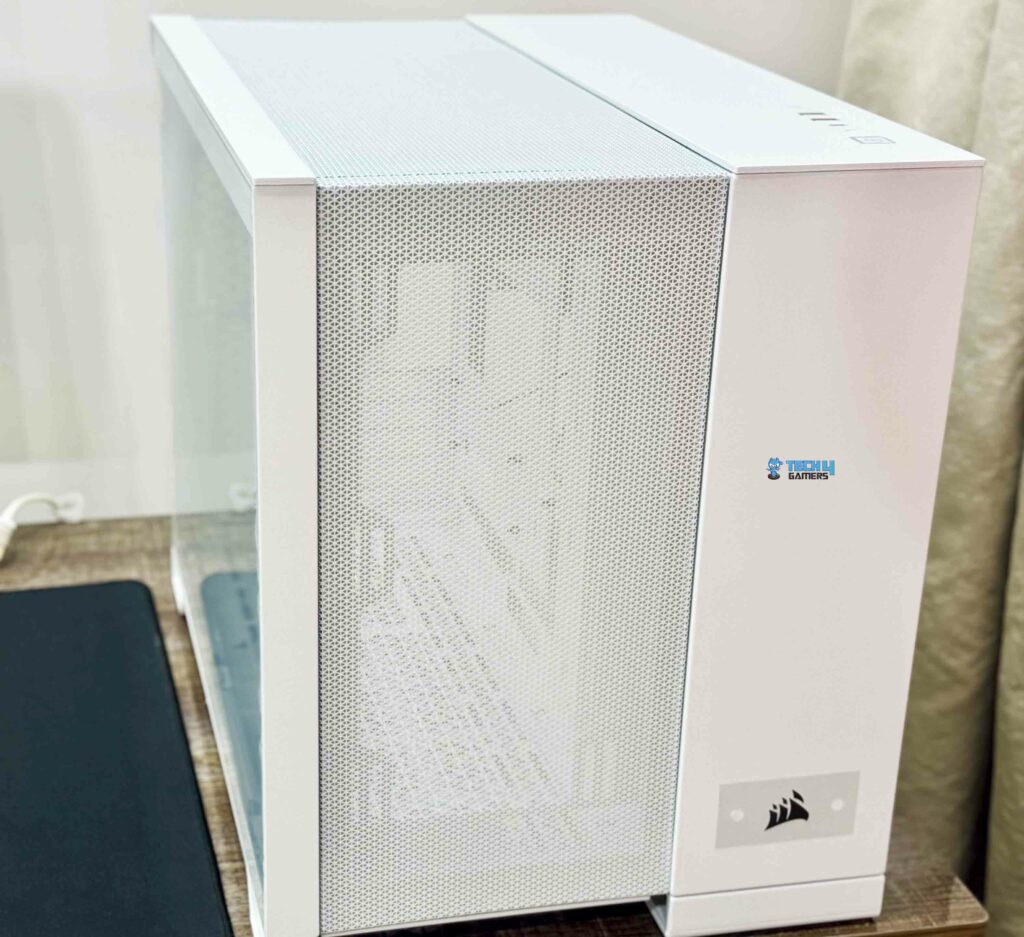
The 2500D Airflow offers a lot of design customizability. You can get the case in either white or black, and there are two models to choose from. The X, with a glass front, and the D, with a mesh front, which is the one I am reviewing. However, when you include the Panel Kits, things spice up. The metal sides are nice, but the wood panels set it apart from the rest of the competition.
These kits are a great way to offer your case a one-of-a-kind look similar to wood paneling, and they come in a variety of patterns. Although the kits’ price points range from $69.99 to $79.99, I must admit that I am already a fan of the 2500D’s attractive appearance, which is a result of its customizable style. In my opinion, the panels further freshen up a case and increase its visual appeal. However, they significantly increase the case’s price tag as well. Everyone might agree that the additional cost is not going to be worthwhile.
Build Quality
When put together, I must admit that Corsair does not let me down when it comes to build quality. The 2500D Airflow has the high-quality feel one would anticipate from a case of its pricing point.
Both the steel frame and the side tempered glass panel give the impression of being premium quality. Throughout my build process, I didn’t encounter any issues, which speaks volumes about its design and ease of use. Notably, the 2500D Airflows layout seems exceptionally well-planned.
One of the case’s best features is its support for back connectors, which enhances cable management and overall aesthetics. When dealing with reverse connection boards, which have several wires flowing behind the motherboard, the second chamber offers sufficient space for cable management. With around four inches of space between the motherboard tray and the side panel, you should have no trouble routing the cables behind the motherboard. Additionally, it can accommodate larger power supplies, not limiting you to smaller SFX units.
Despite its compact size, the case can house up to 11 x 120mm fans or 8 x 140mm fans, along with a 360mm radiator. The fully mesh front, side, bottom, and roof panels ensure excellent airflow from all sides, with intake from the bottom and exhaust from the top and rear. This airflow design ensures efficient cooling comparable to larger cases. The 2500D Airflow effortlessly supports larger GPUs, such as the RTX 4080 Super in my build, and can even accommodate the RTX 4090 due to their similar length.
Building Process
The list of components that I used in this build:
- Ryzen 7 7800X3D
- Corsair TITANIUM 32GB DDR5 6000MHz CL30
- MSI Project Zero B650 Wifi
- Zotac RTX 4080 Super White
- Corsair iCue Link H150i LCD Fans
- Corsair iCue Link QX120 RGB Fans
- 4TB TeamGroup PCIe 4.0 SSD
- Corsair SF1000L ATX 3.0 PSU with Corsair White 12VHPWR Type5 Cable
Now that the case was ready to go, I could install all of the components, and I was struck by the 2500D’s flexibility as a computer case. The case is compatible with both conventional and reverse-connection motherboards. Latter motherboards have popularized this approach to PC building, which is still in its early stages. It can provide us with a more streamlined appearance. Since these motherboards can relocate most of the connections to the board’s rear.
With strategically placed cutouts, the 2500D Airflow facilitates effortless wire management. Moreover, it offers builders more options by accommodating both ATX and SFX power supplies. For a small SFX power supply, Corsair includes a bracket with the 2500D. You need to take off the bracket before using it with an ATX power supply. The PC builders have a lot of leeway since, even with both choices, the full-size PSU goes in easily.
While not very impressive, the 2500D Airflow’s storage choices are only adequate. The 2500D retains a feature from the previous 280X, which offers the option of the two drives that sled atop the power supply compartment in the rear. You have the option of using two 3.5-inch drives. Furthermore, panels on the front inner wall of the case, located at the other end of the rear chamber, provide mounting options for two additional 2.5-inch drives.
While data hoarders might consider this inadequate, the majority of builders should be fine with it. An appealing feature is the drives’ housing in tool-free mounts, which makes them straightforward to use. Unfortunately, removing the hard disk could be necessary to accommodate a bigger power supply unit.
Here is the result:
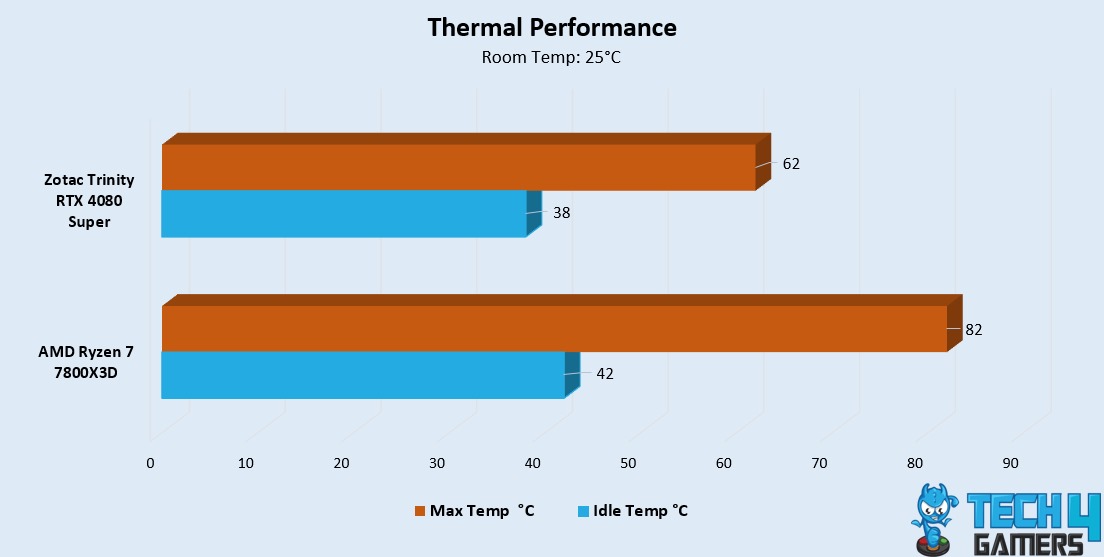
Is It Worth the Price?
The 2500D Airflow is at an odd place when it comes to pricing. The starting price of $159.99 isn’t too expensive, but it quickly becomes so when you include in the cost of a vertical GPU mount, wood as well as aluminum panels, and other simple but necessary extras like wire cover kits and cable routing. Unfortunately, there are no fans included with the base price as well.
So, you have to purchase them separately. Having said that, the case’s features and quality allow Corsair to argue for the price. This case is sturdy and long-lasting. The thoughtful design decisions make it easy to work with and does look great when completed. It has carved out a special place for itself through its large customization choices and emphasis on reverse-connector motherboards.
Should You Buy it?
Buy it if
✅ You need excellent airflow and cooling options: The Corsair 2500D Airflow supports up to eleven 120mm fans and multiple AIO radiators, making it ideal for those who prioritize keeping their high-end components cool.
✅ You appreciate dual-chamber design: The separation of the power supply and storage from the main components not only improves cable management but also enhances the overall aesthetics and thermal performance of your build.
✅ You want customization options: With the choice between white or black models and additional customization through wood or metal panel kits, the 2500D Airflow offers plenty of flexibility to personalize your build’s appearance.
Don’t Buy it if
❌ You are on a tight budget: While the base price is reasonable, the cost can quickly add up with optional extras like the vertical GPU mount, panel kits, and additional fans, making it less suitable for those looking for a budget-friendly option.
❌ You need more storage options: Although it provides adequate storage for most users, data hoarders may find the limited number of drive bays insufficient for their needs.
❌ You prefer a smaller form factor: Despite being designed for smaller builders, the 2500D Airflow is not a tiny form-factor chassis and does not support full-size ATX motherboards, which may be a drawback for those seeking the smallest possible build.
Final Verdict
All in all, the Corsair 2500D Airflow is among the finest cases available out there for rear-connector motherboards. When everything was done and dusted, I found myself quite pleased with this case. It can accommodate a wide range of design choices due to its high flexibility, smart dual-chamber design, and great airflow. By placing cutouts correctly and allowing enough space for the immense quantity of cable slack that comes from connecting almost everything behind the motherboard rather than up front, it nails the fundamentals.
In the end, will everyone find it to be the ideal case for them? I doubt it. If you’re looking for something more affordable or don’t want all of the features that it provides, there are other alternatives available that give much better value for money. However, the 2500D Airflow provides a premium build experience for those who are ready to spend the money on it.
Coming Next: MSI MAG PANO 100L PZ Review
Community Poll
Thank you! Please share your positive feedback. 🔋
How could we improve this post? Please Help us. 😔
[Hardware Expert]
With a major in Computer Science, Sameed is a tech enthusiast who puts his passion for gadgets into words and creates informative blogs. From comparing different hardware to reviewing the best RAMs, motherboards, and graphics cards for your next build, Sameed has covered a wide spectrum of topics that have given him a special insight into every nook and cranny of the tech world. Sameed is also a certified expert at Computer Hardware & Networking.
Get In Touch: sameed@tech4gamers.com


 Threads
Threads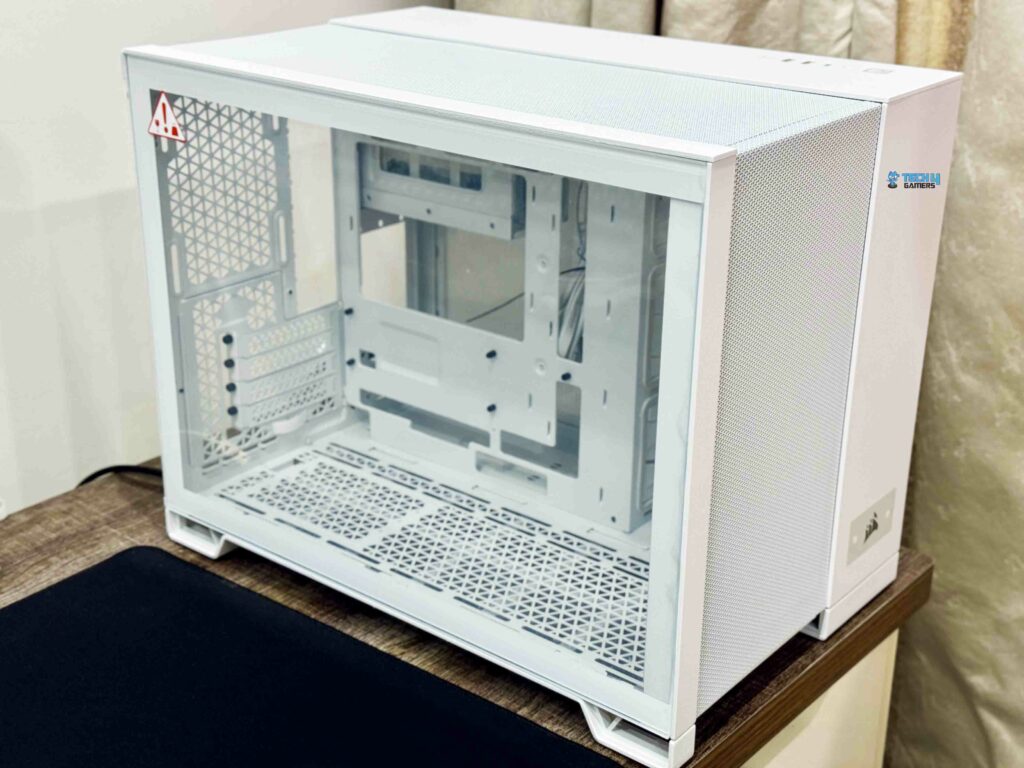
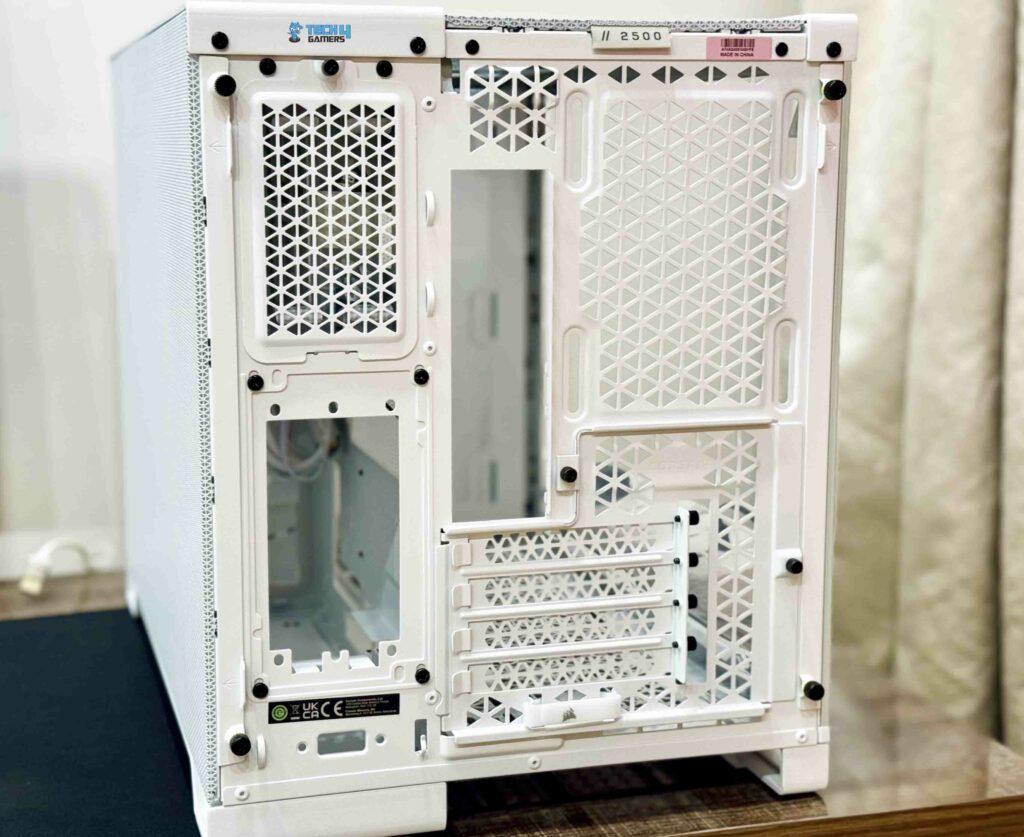
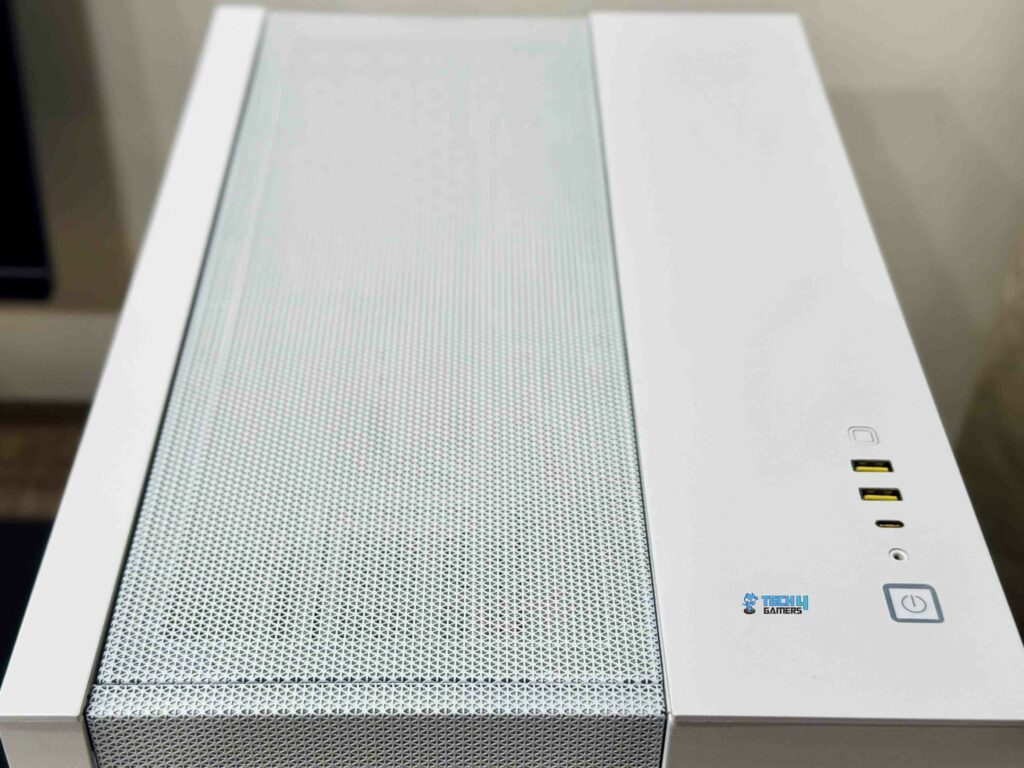
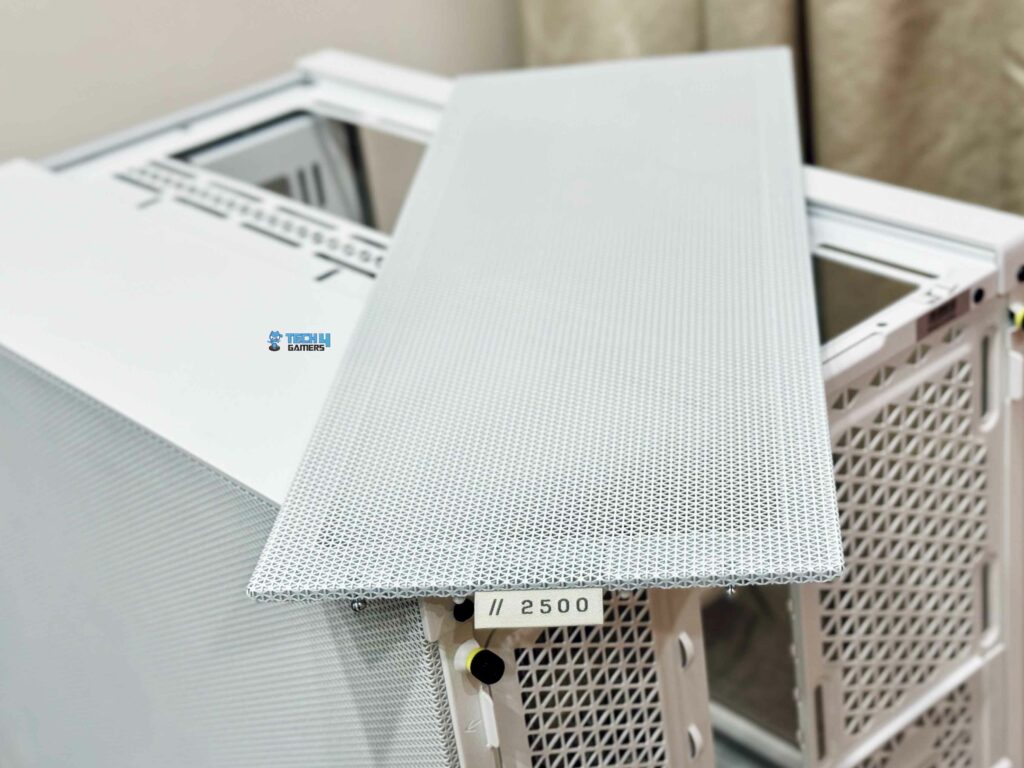
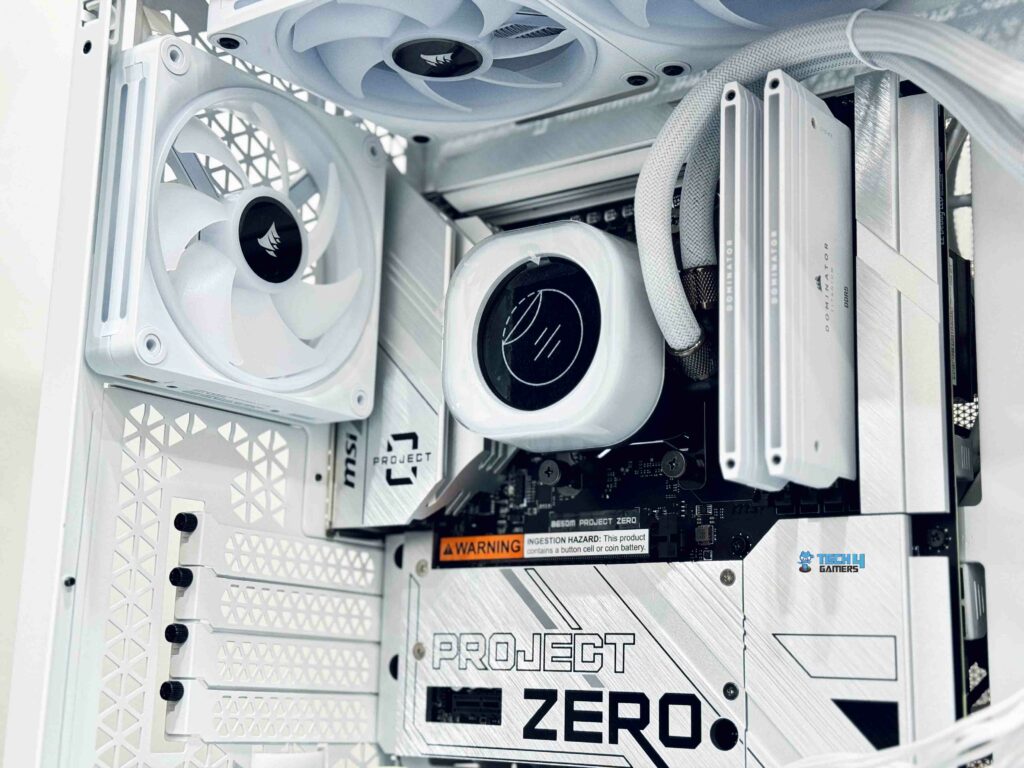

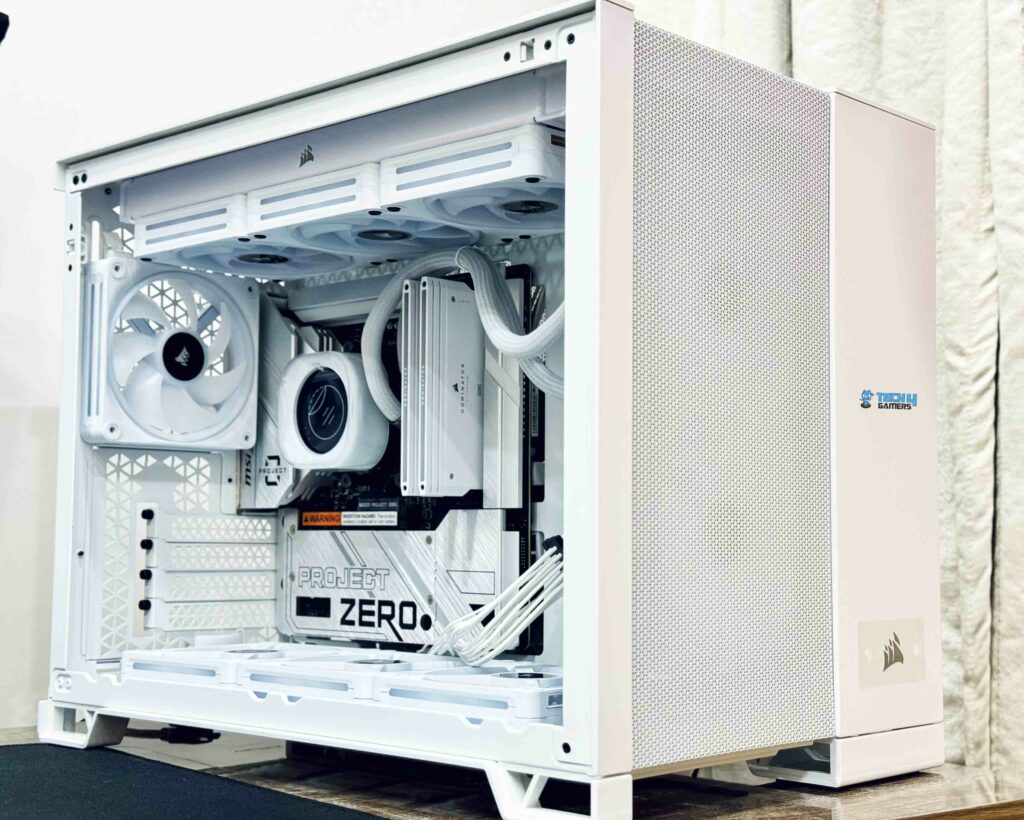
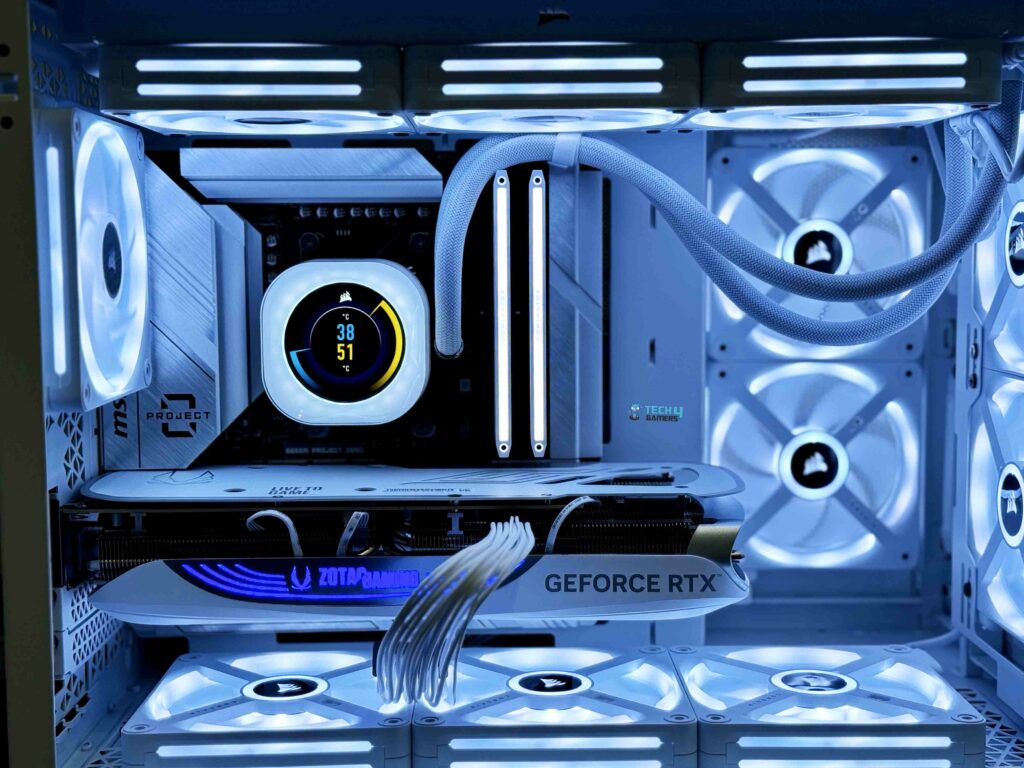

![BEST Mid Tower PC Cases [Budget, Airflow & White] Best Mid Tower PC Cases](https://tech4gamers.com/wp-content/uploads/2023/02/Best-Mid-Tower-PC-Cases-218x150.jpg)
